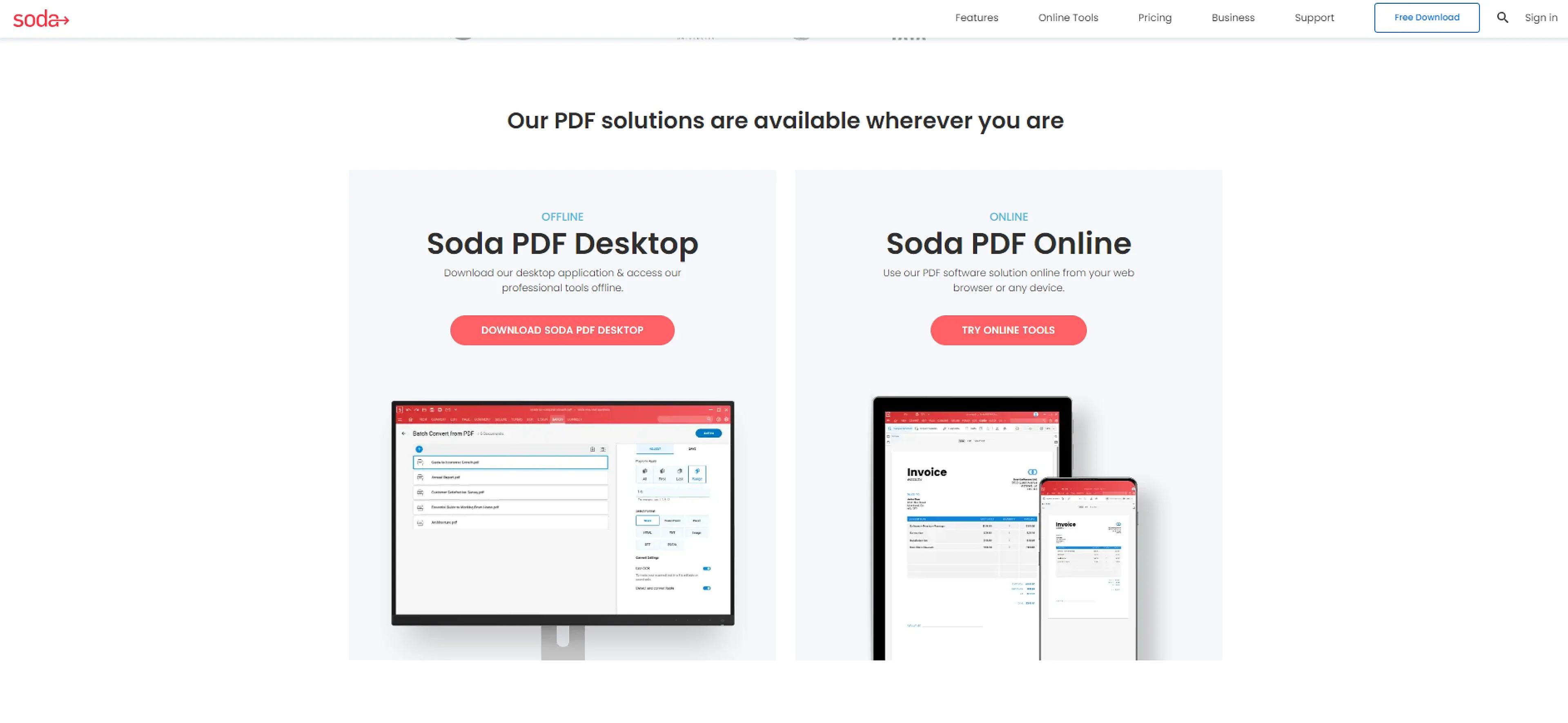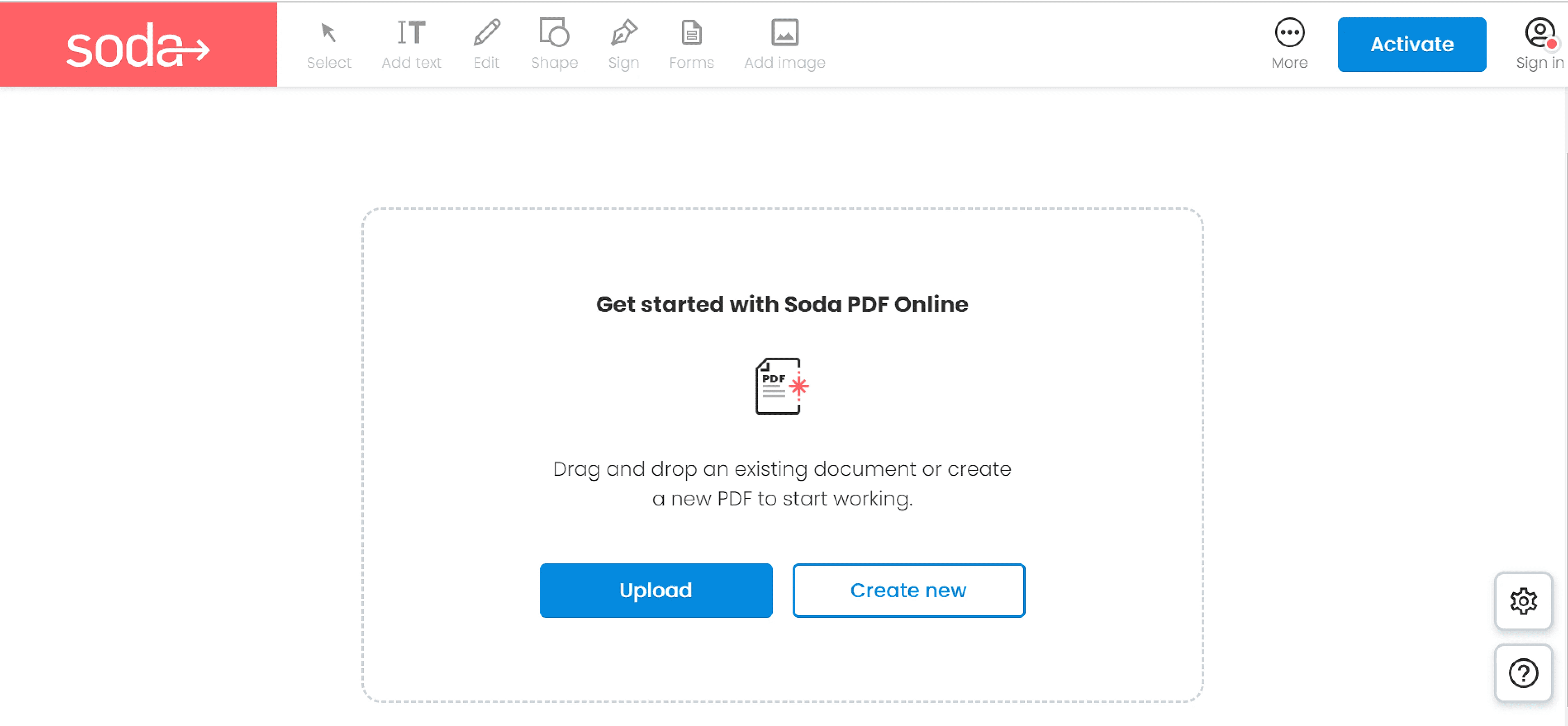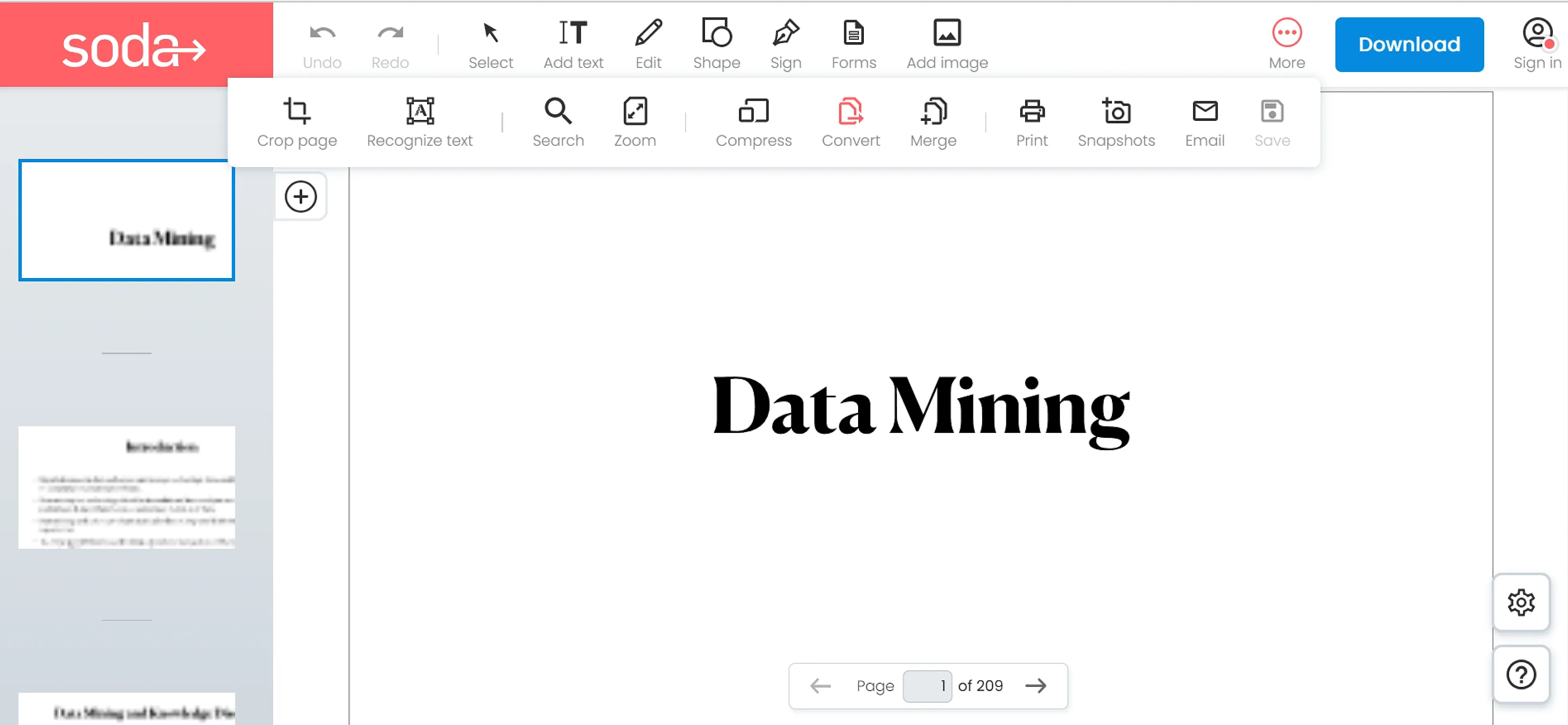
- Why Do You Need to Convert a PDF File Into Different Formats?
- Converting PDF Files: Best Online Tools
- How to Convert PDF Files to Other Formats Using Dedicated Software
- Expert Tips for Converting PDFs Without Losing the Quality
- Why Does the Quality Suffer? Unpacking the Challenges in PDF Conversion
- Final Words

Converting PDF files into multiple formats while maintaining quality is an essential skill for professionals, students, or anyone who wishes to secure the integrity of the documents. PDF files are a preferred file format for their reliability and consistency across multiple devices. These files are suitable for storing all the important information in one place.
Though these files are extremely handy, converting them into Word, Excel, or JPEG can be a challenge. This article provides a simple and detailed guide on how to convert PDF files effectively. Our expert methods and tricks will ensure that the texts, images, and layout of your documents remain as intended. Let’s have a look at the best practices to convert PDF to excel, Word, and other documents easily and efficiently.
Why Do You Need to Convert a PDF File Into Different Formats?
Converting PDF files into multiple formats can be necessary in different situations. These reasons can be related to handling or manipulating the content. Here are a few reasons why you might need to convert PDF documents.
1. Editing Content
PDF files are typically used as a final presentation format and can be difficult to edit. Converting a PDF to an editable format like a Word document allows for more straightforward modifications. Users can easily add or edit texts, images, and other elements into the file.
2. Compatibility with Different Software
Not all software or apps are able to interact with PDF files directly. Converting a PDF to other file formats can improve compatibility. PDF files can be converted to HTML, TXT, or a specific ebook format to ensure compatibility with different applications or devices.
3. Data Extraction
Users can convert PDF files to Excel or CSV files to support quick data extraction and analysis. This allows users to manipulate and comprehend data more efficiently than they would do within a PDF.
4. Reduce File Size
PDF files with high-resolution images or extensive data can take up a lot of storage space on your device. Converting them into a different format, like JPEG or a compressed PDF, can help reduce the file size. A compressed PDF file is easier to share via email or online.
5. Accessibility
Converting PDF files into different formats can improve the accessibility of the documents. These documents can be converted to formats better suited for screen readers and other accessibility tools, such as HTML or plain text.
6. Archiving important information
Converting PDFs into formats that are less likely to become obsolete ensures that documents remain accessible far into the future. Users can convert PDF files to simpler formats like TXT and ensure digital preservation of the documents.
Converting PDF Files: Best Online Tools
There are multiple ways to convert PDF files into any preferred file format. Different devices support different tools and methods for PDF file conversion. Here are some common ways to convert PDF to other formats.
1. Adobe Acrobat Pro
Adobe Acrobat Pro is a popular and powerful tool for handling PDFs. It allows users to export PDFs into various formats as per their preferences. These formats include Microsoft Word, Excel, PowerPoint, and image formats such as JPEG and PNG.
2. Online PDF Conversion Tools
There are multiple online tools that can help users convert PDF to PowerPoint and other formats. These tools generally offer free PDF conversion without needing to download software. You should use a top PDF converter to ensure the best quality. Some commonly used online PDF conversion tools include Smallpdf, ILovePDF, and others. These tools can convert PDFs to a variety of formats.
3. Microsoft Word
Microsoft Word is an extremely useful tool of the Microsoft suite. This tool allows you to access and convert PDF files into editable documents. It converts files into Word documents that can be edited quickly.
4. PDF Conversion Software and Apps
PDF editors and conversion apps are unique desktop or mobile applications that support quick PDF conversion. These apps save time and effort while converting PDF files. Additionally, these apps are useful in converting documents on the go. PDFelement, NitroPDF, etc. are some of the best examples of top PDF conversion software.
5. Specialized Format Convertors
Specialized format converters are used for specific needs and purposes. For instance, ePub can be used to convert a PDF into an ebook.
How to Convert PDF Files to Other Formats Using Dedicated Software
Software like SodaPDF offers a straightforward process for converting PDF Files to other formats. The steps for the same are discussed below in detail -
Step 1 - Launch "SodaPDF" on your device and use the online tools available on the platform. On your screen, find the "Try Online Tools" option and click on it.

Step 2 - Next, you will see an option for selecting the PDF document that you wish to convert into different formats. You can either drag or drop a PDF file or create a new one.

Step 3 - After uploading the PDF, find the "More" option on your screen. Next, click "Convert" to change the PDF document.

Step 4 - The tool will then display 4 different options to convert your PDF file. You can choose to convert the files to Word, Excel, PowerPoint, or an Image.

Step 5 - Select the preferred format and click on "Convert".

Step 6 - Once done, you can now save the file to a desired location on your device.

Expert Tips for Converting PDFs Without Losing the Quality
Converting PDFs without compromising on the quality can be especially challenging for complex documents. Complex documents that include texts, images, and intricate formatting can be tough to convert. Here are some expert tips that can help you convert PDF file easily.
1. Use High-Quality Tools and Software
To convert your PDF into any other document without losing the quality, you must invest in a reliable tool. For instance, tools like SodaPDF, Adobe, iLovePDF, and others are excellent online PDF converter tools. These tools can help you convert PDFs to other formats while maintaining the integrity of the documents.
Some of these tools like SodaPDF also offer free trials for all users. These tools perform exceptionally well and have an ability to convert PDFs to other formats in bulk. You can also consider tools like NitroPDF, Foxit PhantomPDF, and others.
2. Adjust PDF Settings for Optimal Quality
Before converting the document, ensure that conversion settings are fine-tuned. While using the tool, explore the settings and adjust the quality for the best results. Particularly adjust the image and text sharpness for effective PDF conversion.
Ensure to remove all the unnecessary images or graphics from the document before converting it. These heavy elements can hamper the quality of your documents. For the best results, select the highest DPI settings.
3. Preserve Original Formats
Embed the fonts and maintain the layout integrity throughout the conversion of the document. This can prevent any kind of change in typography during PDF conversion. Preserve the original layout to improve the readability of the converted document.
Maintaining the original format is specifically important for documents that have complex formatting. Before you convert PDF to Word, without losing quality, keep the columns, tables, and embed the graphics precisely. This way you can easily convert PDF without losing formatting.
4. Preview the Converted Document
When you are done converting the PDF, preview the document to ensure that it has been converted without loss of quality. Check the formatting, layout, and text to ensure that everything is still intact. If while previewing you notice any errors, which seldom happens, go back to the original PDF and make the necessary changes before converting it again.
5. Backup Original Files
Even when you are done converting your files, always keep a backup of the original PDF files. In case the conversion does not go as planned, you must have the original file saved on your device.
6. Additional Tips
To ensure that the converted output remains close to the original document, you can follow the additional tips listed below.
- Use secure online tools with SSL encryption for sensitive documents
- Manually review and adjust the formats post-conversion of the document
- Explore and test different tools to convert PDF to image or other formats
- To improve the processing time for the documents, reduce the file size. You should compress PDFs without losing quality using online tools
- Opt for vector-based formats like SVG that will not lose quality when scaled or edited
Why Does the Quality Suffer? Unpacking the Challenges in PDF Conversion
Maintaining the original quality can be a complex challenge while converting the PDF file to different formats. This issue primarily arises due to the inherent characteristics of the PDF files and the limitations of the conversion technology. Here’s why the quality is compromised when you convert PDF files.
1. Complex File Format and Structure
PDFs are intended to preserve a document's precise layout. This includes all the texts, photos, and graphics that are maintained across devices and platforms.
This preservation is accomplished using a complex file structure that is difficult to replicate in other formats. Other formats mostly do not support the same layout, font, or formatting criteria.
2. Substituting Fonts
Font substitution is a common issue during the PDF conversion process. If the typefaces used in a PDF are not accessible on the tool used for conversion, they may be changed with another font.
This can affect the appearance of the text, influencing its layout and spacing. These adjustments might cause misalignments and destabilize the overall design.
3. Rendering Graphics and Other Elements
PDF files frequently include high-resolution photos and vector graphics. During conversion, particularly to image formats (such as JPEG or PNG), the quality of these images can suffer.
This is due to modifications in how image data is processed in various formats. Vector graphics, in particular, can lose scalability and produce fragmented pictures when seen at greater magnifications.
4. Limitations of the Conversion Software
A PDF converter's effectiveness has a substantial impact on output quality. Not all conversion tools excel at handling the complexities of PDF files, especially when dealing with complex elements.
These can include embedded films, layered items, or interactive components. Free or less advanced tools may not handle these aspects effectively, resulting in low-quality outputs.
5. Metadata and Formatting Nuances
PDF files can contain a variety of metadata and formatting options, including bookmarks, hyperlinks, annotations, and custom JavaScript. Many of these characteristics are difficult to convert to other formats without sacrificing quality or functionality.
Final Words
In conclusion, converting PDF files without losing quality involves understanding the inherent challenges of the PDF format and selecting the right tools and strategies to overcome them. By utilizing high-quality conversion software and adjusting settings appropriately, you can achieve high-quality conversions.
Always preview and back up your documents to ensure the final product meets your expectations. By following these guidelines, you can efficiently convert PDFs to various formats while preserving their quality. We hope this guide on how to convert PDF without losing quality helped you. Our expert tips will ensure your documents remain professional and accessible across different platforms. Try your hands on the expert tips and manage your documents with ease!
Frequently Asked Questions
-
Can I convert a password-protected PDF?
-
How to convert PDF to Excel?
-
How to convert PDF to image?
-
How to convert PDF to other formats?
-
How to convert PDF to PowerPoint?
-
How to convert PDF to Word?
-
Is it safe to use online PDF converters?
-
What formats can I convert a PDF file to without losing its quality?
-
Will converting a PDF file affect the formatting?

Content Writer
Sakshi Kaushik is a wordsmith extraordinaire who transforms complex technical jargon into captivating, must-read articles. Armed with a Masters in Economics, Sakshi dissects intricate topics with the precision of a seasoned expert. Her insights have graced prestigious platforms like Hackernoon, Ecowiser, and Medium, captivating readers and tech aficionados alike. With a career spanning influential companies like Teleperformance, Finex, and SparxIT Solutions, Sakshi is well-versed in navigating both the keyboard and the boardroom.
In addition to her extensive experience, Sakshi holds HubSpot certifications in Digital Advertising and Content Marketing, and has earned further credentials from UpGrad, Coursera, and Great Learning. Dedicated to sharing her expertise with mobile app developers and tech enthusiasts, Sakshi's passion shines through her writing. When she's not crafting compelling content, she enjoys diving into thrilling novels and exploring diverse worlds.















